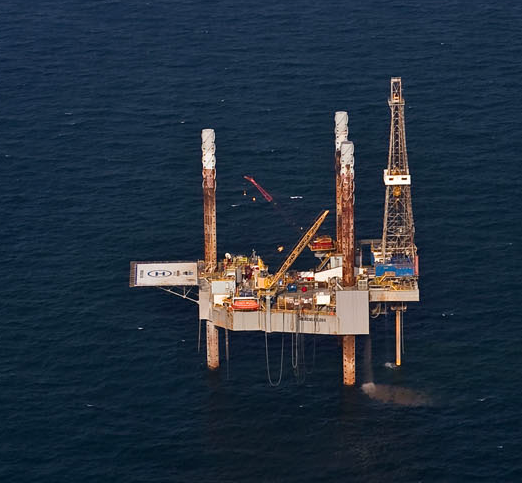Oil and Gas Extraction Effluent Guidelines

On this page:
- What is the Oil and Gas Extraction Industry?
- Facilities Covered
- Study of the Agricultural and Wildlife Water Use Subcategory
- Pollutant Concentration Tool for Agricultural and Wildlife Water Use
- Unconventional Extraction - Pretreatment Standards
- Study of Oil and Gas Extraction Wastewater Management - 2019
- Coalbed Methane Extraction
- Rulemaking History
- Additional Information
What is the Oil and Gas Extraction Industry?
Oil and Gas Extraction is the exploration and production of petroleum and natural gas from wells. The industry generates wastewater from the water extracted from the geological formations and from chemicals used during exploration, well drilling, and production of oil and gas.
These activities are included within NAICS code 211111, Crude Petroleum and Natural Gas Extraction. (Note: the NAICS group listings are provided as a guide and do not define the coverage of the Oil and Gas regulations. For precise definitions of coverage, see the applicability sections in 40 CFR Part 435.)
Facilities Covered
- Offshore (Subpart A)
- Onshore (Subpart C)
- Coastal (Subpart D)
- Agricultural and Wildlife Water Use (Subpart E)
- Stripper Wells (Subpart F)
| All Subparts | Subparts A & E Only |
|---|---|
| Produced waterThe fluid brought up from the hydrocarbon-bearing strata during the extraction of oil and gas, and includes, where present, formation water, injection water, and any chemicals added downhole or during the oil/water separation process. [40 CFR 435.11(bb); 435.33(a)(2)(v); 435.41(bb)] | Domestic |
| Produced sandThe slurried particles used in hydraulic fracturing, the accumulated formation sands and scales particles generated during production. Produced sand also includes desander discharge from the produced water waste stream, and blowdown of the water phase from the produced water treating system. [[40 CFR 435.11(aa); 435.33(a)(2)(iv); 435.41(aa)] | Sanitary |
| Drilling fluids | Deck drainage |
| Drill cuttings | |
| Well treatment, workover & completion fluids |
Study of the Agricultural and Wildlife Water Use Subcategory
The regulations at 40 CFR 435 Subpart E allow for discharge of produced water from onshore facilities into navigable waters west of the 98th meridian if the produced water has a use in agriculture or wildlife propagation. These facilities are engaged in the production, drilling, well completion, and well treatment in the oil and gas extraction industry. The EPA promulgated the Subpart E regulations in 1979. Many changes have occurred in the industry since that time. The Agency has completed a study that evaluated whether there are economically achievable and available treatment technologies that can reduce the discharge of pollutants from this industry. Based on the study, the EPA has announced a rulemaking to revise the Subpart E regulations and to expand produced water reuse opportunities nationwide. The Agency expects to publish a report on the study soon.
- Press release (March 12, 2025)
For additional information on the study, please contact Sean Dempsey (dempsey.sean@epa.gov) at 202-564-5088.
Pollutant Concentration Tool for Agricultural and Wildlife Water Use
The regulations in Subpart E allow for discharge of produced water west of the 98th meridian, if the produced water is of good enough quality to be used for wildlife or livestock watering or other agricultural uses and the produced water is actually put to such use during periods of discharge. This tool provides pollutant concentration data reflecting various uses taken from the scientific literature. The tool can be used by NPDES permitting authorities and others to inform what levels of pollutants contained in produced water may be protective of various beneficial uses.
Note that using the Pollutant Concentration Tool requires the use of macros in Microsoft Excel. Instructions for turning on macros can be found here.
Unconventional Extraction - Pretreatment Standards
- Final Rule (June 2016)
Study of Oil and Gas Extraction Wastewater Management - 2019
Coalbed Methane Extraction Documents - 2010/2013
Rulemaking History
2016 Amendment
- Subpart C - Final Rule (June 2016)
2001 Amendment
- Clarification Memo: Standards for Controlling SBF Discharges (10/10/2003)
- Technical correction to January 22, 2001 rule (June 8, 2001)
- Final Rule (January 22, 2001)
- Development Document
Describes industry processes, pollutants generated, available control & treatment technologies, the technical basis for the final rule, and costs of the rule
- Development Document
- Proposed Rule (February 3, 1999)
1996 Amendment
- Final Rule (December 16, 1996)
- Proposed Rule (February 17, 1995)
1993 Amendment
- Documents, including:
- Final Rule (March 4, 1993)
- Development Document
- Proposed Rules:
- March 13, 1991
- November 26, 1990
- October 21, 1988 (Notice of Data Availability)
- August 26, 1985
- Final Rule (March 4, 1993)
1979 Initial Rulemaking
- Documents, including:
- Final Rule (April 13, 1979)
- Interim Final Rules:
- October 13, 1976 (Subparts C through F)
- September 15, 1975 (Subparts A and B)
- Development Document
Additional Information
For additional information on the Oil and Gas Effluent Guidelines, please contact Sean Dempsey (dempsey.sean@epa.gov) or 202-564-5088.
